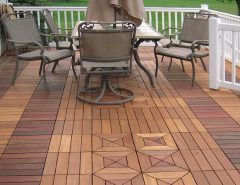Key Takeaways
- Floral arrangements offer more than aesthetic beauty; they play a significant role in emotional expression and design.
- Understanding the design principles of floristry can enhance the selection and arrangement of flowers in your home.
- Technology and sustainability are shaping the future of floral design in home decor.
Beyond their natural beauty, flowers can profoundly transform the aesthetics and ambiance of our living spaces. For city dwellers especially, having access to nature’s splendor can be both a visual and emotional respite. In a bustling city like Boston, the desire for freshness and vibrancy is often met by services offering same day flower delivery Boston, MA, providing an immediate connection to the natural world. This expeditious service allows the beauty of nature to be a staple in urban homes, offering the elements of tranquility and color that are otherwise sparse in the concrete jungles. With the proper selection of blooms, these floral deliveries can become artistic expressions that reflect one’s style and decor preferences, making each bouquet a statement piece that complements the domestic landscape.
Understanding the Emotional Language of Flowers
The history of floral design stretches back thousands of years, weaving a complex tapestry of symbolism and significance with every blossom. The Victorians even developed an elaborate language of flowers, or floriography, which allowed them to convey complex emotions and messages through bouquets silently. Today, this tidbit of knowledge proves invaluable for those looking to embed emotional depth into their living spaces. Flowers like chrysanthemums can symbolize loyalty and love, while gladioli often represent strength and sincerity. This understanding invites homeowners to curate their unique botanical symphony that aligns with their desired emotional undertone.
The application of color theory in floral choices cannot be overstated. The judicious selection of hues is pivotal in mood enhancement and creating an atmosphere. For instance, vibrant reds can infuse a space with energy and passion, while soft lavenders and blues impart a sense of calm and serenity. Incorporating such theories into the selection and placement of flowers can contribute to a more harmonized and psychologically comforting home environment.
Design Principles in Floral Arrangements
Floral artistry is akin to other forms of visual design, where form, texture, and color converge to create a piece greater than the sum of its parts. A well-designed arrangement can guide the viewer’s eye, providing a natural flow that is pleasing and coherent. Employing these design principles expertly can elevate mere floral decoration to a curated display, enhancing the natural qualities of the individual blooms through thoughtful composition. Additionally, the florist’s understanding of seasonal variations allows them to liaise with nature’s calendar, bringing the most timely and contextually relevant blooms into the home.
Flower arrangements are temporary works of art, yet their presence can be appropriately extended. Experts tout the benefits of using floral preservatives, providing flowers with the right kind and amount of light, and suggesting regular water changes to ensure that each arrangement maintains its fresh appeal for as long as possible. These practices not only preserve the blossoms’ beauty but also extend the emotional resonance that the flowers bring to a space.
Floral Arrangements as Focal Points in Rooms
The importance of creating focal points—areas in a room that immediately draw the eye—cannot be understated in interior design. Floral arrangements can serve as impactful visual attractions when placed thoughtfully. An arresting orchid display can become the conversation piece in a living room, while a simple collection of wildflowers might add a touch of whimsy to a kitchen counter. Keen attention to detail is essential when combining floral displays with other elements of home decor; everything from the choice of flowers to the style of the vase contributes to the aesthetic harmony of the room. It’s not solely about the flowers but how they interact and contrast with their surroundings that can make them stand out as proper centerpieces of a room’s design narrative.
The Crossroads of Floriculture and Interior Design
As we traverse the nexus of floriculture and interior design, we witness a beautiful symbiosis that results in extraordinary spaces. Florists and interior designers are increasingly finding common ground, realizing that the textures, colors, and forms in floral arrangements can do more than “decorate” a space; they can transform it. This fusion gives rise to a renewed interest in the biophilic design movement, which underscores the human desire to connect with nature and advocates for integrating the natural environment into built spaces. Using flowers in home decor means championing this philosophy, reconnecting urbanites with the earth in a deeply aesthetic and profoundly spiritual manner.
Do-It-Yourself: Crafting Personalized Floral Decor
DIY efforts in floral decor are cost-effective and immensely satisfying, allowing individuals to inject their personality into their surroundings. This hands-on approach to floristry is an expressive outlet that encourages the designer in everyone. With the rise of ‘maker culture’ and access to online resources, more people are discovering the joy of selecting, cutting, and arranging flowers. This trend bespeaks a return to craft, an appreciation for the tangible, and a love for bespoke creations that embody personal stories and themes. The possibilities are boundless, from wreaths that welcome guests with warmth to mason jar centerpieces that evoke rustic charm.
Flowers and Wellbeing: The Therapeutic Effect of Flower Arranging
The practice of flower arranging extends beyond mere aesthetics—it has tangible benefits on mental health and personal well-being. The immersive nature of working with flowers—their colors, textures, and perfumes—engages the senses and offers a reprieve from the stresses of everyday life. Requiring a measure of skill and artistic vision, flower arranging becomes a therapeutic ritual that encourages mindfulness and cultivates patience. This therapeutic aspect is particularly resonant for those seeking a soulful hobby, as confirmed by the various scientific studies affirming the connection between flowers and a pronounced sense of happiness and emotional well-being in one’s living space.




